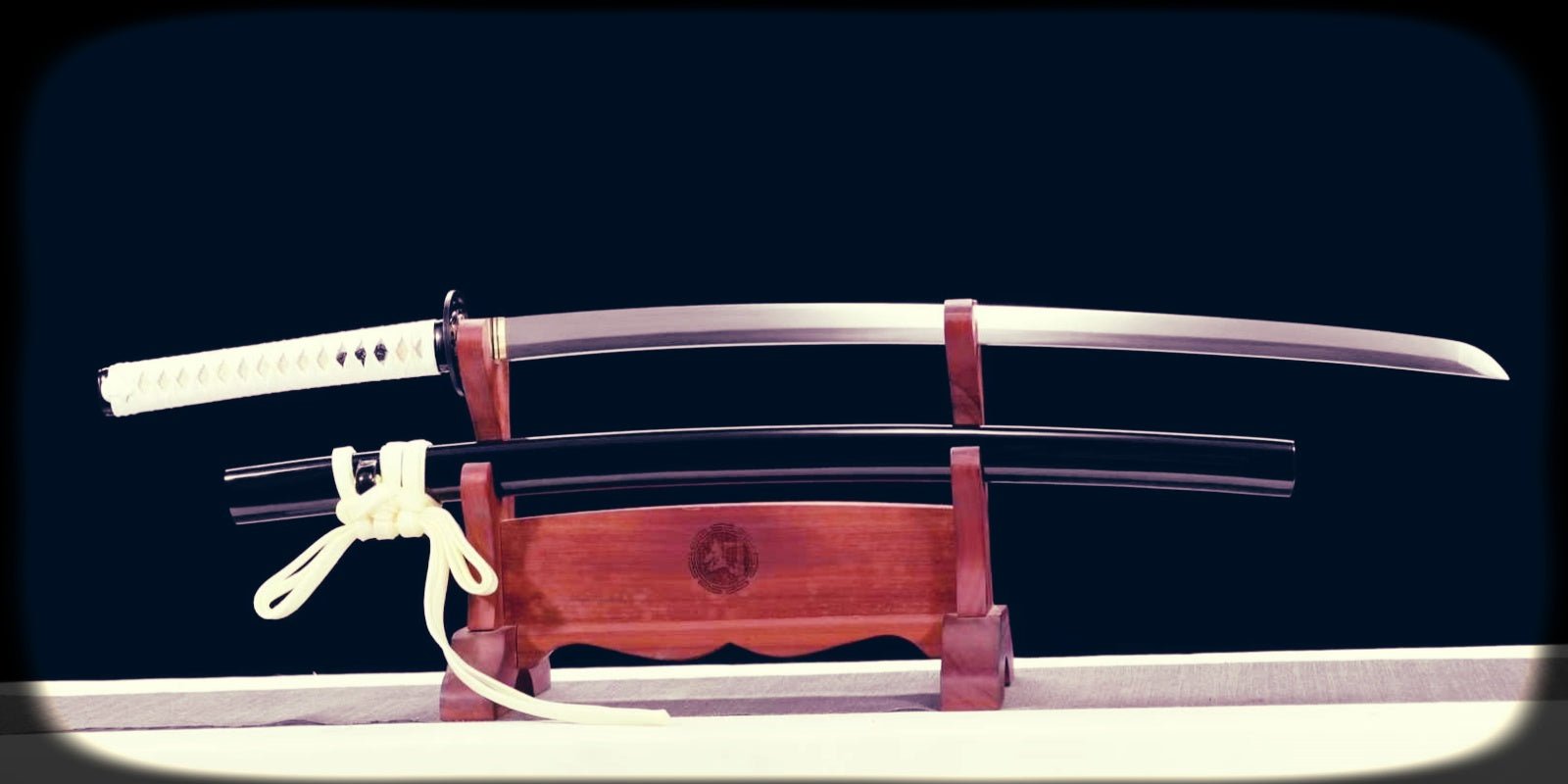Introduction to Menuki: An Integral Part of Katana Design
Menuki are decorative metal fittings traditionally embedded beneath the grip wrapping, or tsuka-ito, of a katana. Originally serving as purely ornamental features, their purpose evolved to enhance the tactile grip of the sword. These intricate components are made from various materials, including gold, silver, copper, and alloys, and are often crafted into symbolic designs such as animals, flowers, or cultural motifs. Positioned along the handle, menuki ergonomically fit the contours of a user's hand, ensuring stability during usage. Their placement and intricate detailing reflect both the artisan's craftsmanship and the swordsman's personal aesthetic preferences, seamlessly blending form with function.
Historical Origins and Evolution of Menuki in Japanese Swordsmanship
Menuki traces its origins to the early days of Japanese sword crafting during the Heian period (794–1185). Initially, these decorative fittings were utilized as talismans, symbolizing protection or conveying spiritual significance to the wielder. As swordsmanship evolved, menuki transitioned from purely ornamental objects to functional components, placed beneath the tsuka-ito (wrapping) to enhance the grip of the sword.
During the Edo period (1603–1868), the design of menuki flourished, reflecting the wealth and artistic preferences of samurai culture. Crafted from precious metals like gold and silver, menuki often depicted nature, mythology, or clan emblems, blending aesthetics with practicality.
Symbolism and Aesthetics of Menuki: Beyond Utility
Menuki hold profound symbolic significance, often reflecting the cultural values, history, and artistry of their origin. These meticulously crafted ornaments are not merely decorative; they often depict motifs such as dragons, sakura blossoms, koi fish, or traditional crests that carry deeper meanings related to strength, beauty, or family lineage. The aesthetic appeal of menuki enhances the sword's individuality, turning each piece into a narrative of its wielder’s identity or heritage. By blending intricate craftsmanship with cultural symbolism, menuki elevate the katana into a work of art. This artistry transforms functionality into a dual expression of beauty and tradition.
Traditional Materials and Crafting Techniques for Menuki
Traditional menuki are crafted from an array of high-quality materials chosen for their durability and aesthetic appeal. Commonly used materials include:
- Gold and Silver: Valued for their luster and ability to hold intricate detailing.
- Copper and Bronze: Favored for their workability and patina that develops with time.
- Shakudo: A Japanese alloy of gold and copper that produces a distinctive dark finish.
- Shibuichi: A silver-copper alloy offering gradients of color, often used alongside other metals.
Artisans employ meticulous hand-carving, casting, and inlaying techniques to create detailed, symbolic motifs. Surface treatments such as polishing, gilding, or patination enhance texture and depth, reflecting the artisan’s skill.
The Placement of Menuki and Its Purpose in Katana Ergonomics
Menuki, ornamental fittings on the grip of a katana, are strategically positioned beneath the handle wrap (tsuka-ito). Typically, they are placed on opposite sides of the handle—one positioned under the palm of the wielder’s dominant hand, and the other opposite to enhance balance. This placement is not arbitrary; it serves ergonomic and functional purposes.
- The raised surface provides tactile feedback, aiding grip during maneuvers.
- Proper placement ensures hand alignment and reduces slippage, even in dynamic use.
By blending functionality with artistry, menuki contribute not only to better handling but also to the comfort and control essential in swordsmanship.
How Menuki Enhance Grip and Functionality for Swordsmen
Menuki play a critical role in improving grip and functionality for swordsmen by offering both tactile and ergonomic benefits. Positioned beneath the tsuka-ito (handle wrap), they create subtle yet significant contours that promote a more secure grasp. This added texture helps swordsmen maintain control during combat or practice by preventing slippage caused by sweat or vigorous movement.
Furthermore, the placement of menuki can enhance comfort by adjusting to the natural curvature of the hand. Swordsmen often prefer specific menuki arrangements for optimal grip alignment, contributing to precision and fluidity in their strikes. These embellishments are more than decorative; they are an essential grip aid.
Variations in Menuki Designs Across Different Eras and Schools
Menuki designs evolved significantly across different historical periods and schools of sword craftsmanship in Japan, reflecting regional preferences, cultural symbols, and artistic styles. During the Muromachi period, simpler motifs like flora and animals were favored. By contrast, the Edo period saw intricate and ornate designs featuring mythological creatures, celestial bodies, and detailed storytelling elements. Schools such as the Goto and Omori emphasized precious metals and fine engraving, while Mino artisans leaned toward minimalist patterns. These differences not only showcased artistic diversity but also catered to various samurai social standings and tastes. Regional schools often integrated local traditions, enriching their uniqueness.
The Role of Menuki in Personalizing Katana for Samurai Warriors
Menuki, decorative metalwork traditionally embedded beneath the handle wrapping of a katana, played a pivotal role in reflecting the identity of samurai warriors. These adornments served not only as functional elements for enhanced grip but also as deeply personal symbols of the samurai's social status, family lineage, or personal beliefs.
Crafted from high-quality metals such as gold, silver, or copper, menuki often featured intricate designs, ranging from mythical creatures like dragons and phoenixes to representations of flora and fauna. Samurai would commission custom menuki, enabling their weapons to embody their unique tastes and philosophies. Over time, these embellishments became both deeply practical and artistically significant within samurai culture.
Cultural and Spiritual Significance of Menuki in Samurai Tradition
Menuki, beyond their functional role on a sword’s tsuka, embody profound cultural and spiritual symbolism in the samurai tradition. These ornamental fittings were often crafted with intricate designs depicting themes like animals, plants, or mythological figures, each carrying distinct meanings. A dragon design, for instance, symbolized strength and protection, while floral motifs represented growth and harmony.
Samurai regarded menuki as talismans, believing them to imbue their weapons with spiritual power and courage. Family crests (kamon) were occasionally engraved to signify loyalty and lineage. This dual role as both a protector and a personal emblem reflected the samurai's connection to their sword as an extension of their soul.
Modern Applications: Menuki in Contemporary Katana Crafting
In modern katana craftsmanship, menuki retain their functional and aesthetic significance while evolving to suit contemporary preferences. Modern artisans often incorporate materials like alloys, brass, and silver to craft menuki, ensuring durability and artistic appeal. The designs range from traditional Japanese motifs, such as dragons and cherry blossoms, to customized patterns that reflect personal stories or philosophies.
Advancements in manufacturing processes have enabled precision in detail, enhancing the menuki’s role as a visual centerpiece. Furthermore, ergonomic considerations ensure the placement of menuki continues to optimize grip. Collectors and martial artists prize menuki for their seamless blend of tradition and innovation.
Challenges in Preserving Authenticity in Antique Menuki Restorations
Restoring antique menuki poses significant challenges due to their intricate craftsmanship and historical value. Ensuring authenticity requires meticulous attention to detail to prevent alterations that compromise their original design or materials. Preservation experts face difficulties in identifying the exact alloys, techniques, or patinas used by the original craftsmen, as these components are often unique to specific periods or regions.
Additionally, balancing restoration with the item's cultural integrity is crucial. Over-restoration risks erasing signs of age that contribute to authenticity, while under-restoration may leave degradation unchecked. Collectors and historians often emphasize the importance of sourcing skilled artisans familiar with traditional methods to maintain historical fidelity.
Collecting Menuki: A Growing Trend Among Sword Enthusiasts
Collecting menuki has emerged as a popular pursuit among sword enthusiasts, driven by their intricate designs and historical significance. These ornamental fittings are no longer valued solely for their practical purpose but for their artistic and cultural worth. Crafted from materials like gold, silver, or bronze, menuki often depict themes ranging from mythology to nature, making each piece unique.
- Artistic Appeal: Enthusiasts seek menuki as miniature works of art, appreciating the craftsmanship and attention to detail.
- Historical Value: Antique menuki offer a glimpse into feudal Japanese life, showcasing period-specific aesthetics.
- Customization: Collectors often select menuki to personalize their swords or for standalone display.
This trend reflects the growing appreciation for traditional Japanese craftsmanship.
Conclusion: Menuki as a Fusion of Art, Function, and Heritage
Menuki serve as more than a decorative element; they embody a harmonious blend of artistry, practicality, and tradition. Their intricate designs often depict culturally significant motifs, bridging the craftsman’s vision and the wielder’s identity. Strategically positioned beneath the tsuka-ito, they enhance grip ergonomics by filling the contours of the palm, improving handling during combat or practice. Furthermore, their presence pays homage to centuries of Japanese sword craftsmanship, reflecting the values and aesthetics of bygone eras. By uniting functional utility with artistic storytelling, menuki stand as a testament to the enduring legacy of Japan's sword-making heritage. Each carries meaning beyond its external form.

